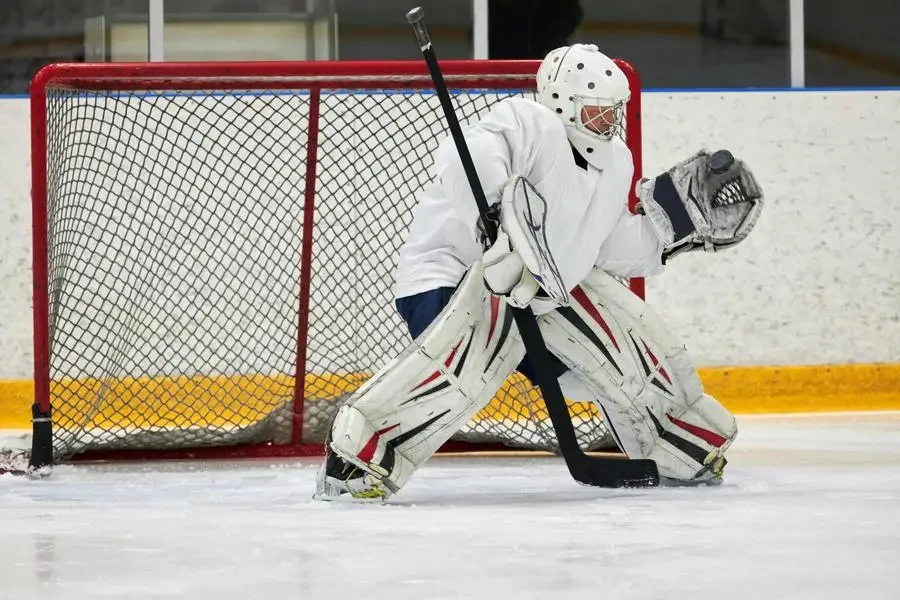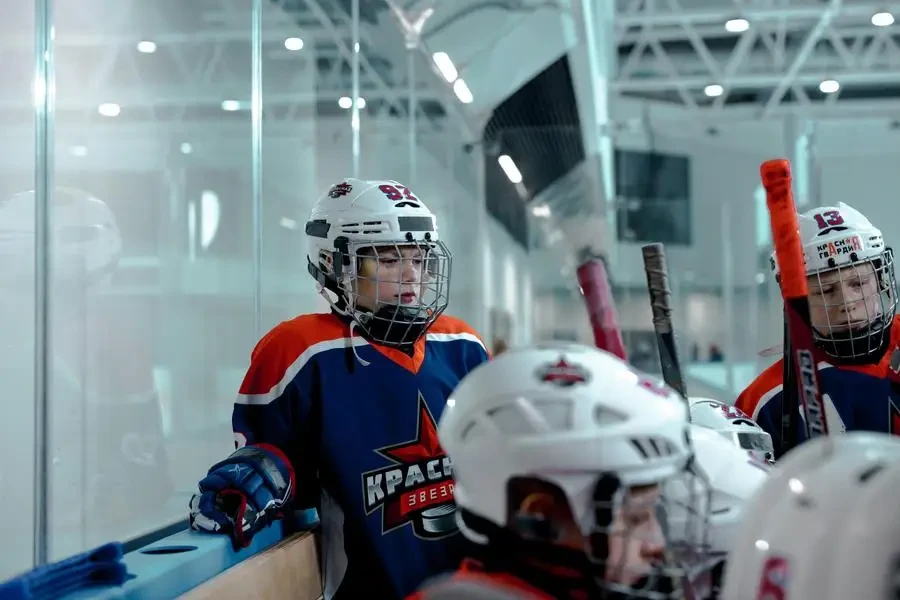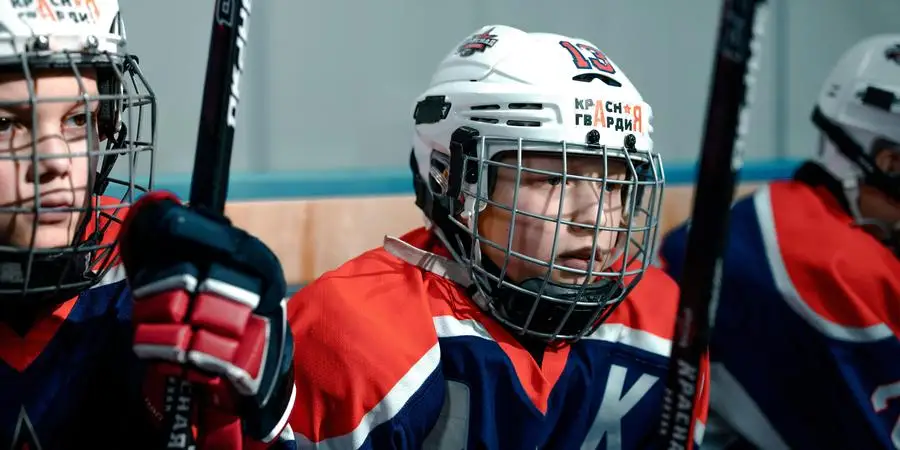Hockey masks have come a long way since their inception, evolving from simple protective gear to highly sophisticated equipment designed to enhance both safety and performance. As the demand for hockey masks continues to grow, driven by increasing participation in the sport and advancements in technology, the market is witnessing significant changes. This article delves into the current market trends, the materials and designs that are shaping the future of hockey masks, and the technological innovations that are setting new standards in the industry.
Table of Contents:
Market Overview: The Growing Demand for Hockey Masks
Advanced Materials and Texture: Enhancing Performance and Safety
Cutting-Edge Design Trends in Hockey Masks
Technological Features: The Future of Hockey Masks
Durability and Weather Resistance: Built to Last
Market Overview: The Growing Demand for Hockey Masks

The hockey mask market is experiencing robust growth, driven by several key factors. According to a report by Research and Markets, the global market for face masks, including hockey masks, is projected to grow from $14.49 billion in 2023 to $15.6 billion in 2024, at a compound annual growth rate (CAGR) of 7.6%. This growth is expected to continue, reaching $21.22 billion by 2028, with a CAGR of 8.0%.
One of the primary drivers of this growth is the increasing participation in hockey, both at amateur and professional levels. The sport’s popularity is rising globally, with significant growth observed in regions such as North America and Europe. This surge in participation has led to a higher demand for protective gear, including hockey masks, as players and teams prioritize safety.
Another contributing factor is the continuous advancements in materials and technology used in the manufacturing of hockey masks. Manufacturers are investing heavily in research and development to create masks that offer superior protection, comfort, and performance. For instance, the integration of high-quality materials such as carbon fiber and advanced polymers has significantly enhanced the durability and impact resistance of hockey masks.
Regional insights reveal that North America remains the largest market for hockey masks, driven by the sport’s deep-rooted popularity and the presence of major leagues such as the NHL. Asia-Pacific is emerging as a significant market, with countries like China and India witnessing a growing interest in hockey. This region’s market is expected to grow at an impressive rate, fueled by increasing investments in sports infrastructure and rising disposable incomes.
Key players in the hockey mask market include well-established brands such as Bauer, CCM, and Warrior, which dominate the market with their innovative products and strong brand presence. These companies are continuously launching new products with advanced features to cater to the evolving needs of players. For example, Bauer’s latest line of hockey masks incorporates advanced ventilation systems and customizable fit options, setting new benchmarks in the industry.
Future trends in the hockey mask market indicate a shift towards more personalized and technologically advanced products. The integration of smart technology, such as sensors that monitor impact forces and provide real-time data, is expected to revolutionize the market. Additionally, the focus on sustainability is growing, with manufacturers exploring eco-friendly materials and production processes to reduce their environmental footprint.
Advanced Materials and Texture: Enhancing Performance and Safety

High-Quality Materials for Maximum Protection
In the realm of hockey masks, the use of advanced materials is paramount to ensuring both performance and safety. Modern hockey masks are constructed using high-quality materials such as polycarbonate, fiberglass, and Kevlar. These materials are chosen for their exceptional strength-to-weight ratios, which provide maximum protection without compromising on comfort or mobility. Polycarbonate, for instance, is renowned for its impact resistance and is commonly used in the construction of visors and face shields. Fiberglass, on the other hand, offers a balance of durability and flexibility, making it ideal for the shell of the mask. Kevlar, known for its use in bulletproof vests, is incorporated into hockey masks to enhance their ability to withstand high-impact collisions.
The integration of advanced materials in protective gear is not limited to hockey masks. Ski helmets, such as the Oakley Mod5 MIPS, utilize hybrid in-mold construction to combine the benefits of different materials, resulting in a helmet that offers both durability and lightweight performance. This approach is mirrored in the design of high-end hockey masks, where the strategic use of materials ensures that players are protected from the intense impacts that are common in the sport.
Texture Innovations for Comfort and Fit
The texture of a hockey mask plays a crucial role in its overall comfort and fit. Innovations in texture design have led to the development of masks that not only provide a secure fit but also enhance the player’s comfort during extended periods of wear. Modern hockey masks feature inner linings made from moisture-wicking fabrics that help keep the player dry and comfortable. These fabrics are designed to draw sweat away from the skin, reducing the risk of irritation and discomfort.
Additionally, the use of antimicrobial foams, helps to prevent odor buildup and maintain hygiene. This technology is equally beneficial in hockey masks, where the accumulation of sweat and bacteria can lead to unpleasant odors and potential skin issues. By incorporating antimicrobial properties into the inner lining, manufacturers ensure that the mask remains fresh and comfortable even after prolonged use.
Cutting-Edge Design Trends in Hockey Masks

Ergonomic Designs for Optimal Performance
Ergonomic design is a key trend in the development of modern hockey masks. These designs prioritize the natural movements and contours of the human body, resulting in masks that enhance performance by providing a more natural and comfortable fit. Ergonomically designed masks are shaped to follow the curves of the face and head, reducing pressure points and ensuring that the mask stays securely in place during intense gameplay.
Customization Options for a Personalized Fit
Customization is another significant trend in the design of hockey masks. Players have unique preferences and requirements when it comes to the fit and feel of their protective gear, and manufacturers are increasingly offering options that allow for a personalized fit. This includes adjustable straps, interchangeable padding, and customizable shell designs.
The “Best Ski Helmets of 2024-2025” report mentions the use of BOA tensioning systems in helmets like the Oakley Mod5 MIPS, which allow for precise adjustments to achieve the perfect fit. Similar systems are being adopted in hockey masks, providing players with the ability to fine-tune their gear for maximum comfort and security. Customization options not only enhance the fit but also allow players to express their personal style through unique designs and color choices.
Technological Features: The Future of Hockey Masks

Integration of Smart Technology for Enhanced Safety
The future of hockey masks lies in the integration of smart technology. Innovations such as impact sensors and real-time data monitoring are being incorporated into masks to enhance player safety. These technologies can detect the force and location of impacts, providing valuable data that can be used to assess the risk of injury and improve the design of protective gear.
The use of advanced safety features like MIPS (Multi-directional Impact Protection System) in ski helmets has set a precedent for similar innovations in hockey masks. MIPS technology, which reduces rotational forces during impacts, is being adapted for use in hockey masks to provide an additional layer of protection against concussions and other head injuries.
Advanced Ventilation Systems for Better Breathability
Ventilation is a critical aspect of hockey mask design, as it directly impacts the player’s comfort and performance. Advanced ventilation systems are being developed to improve airflow and reduce heat buildup inside the mask. These systems often include strategically placed vents and channels that allow for efficient air circulation, keeping the player cool and comfortable during intense gameplay.
Ventilation in helmet adjustable venting systems are a key feature in models like the Giro Grid Spherical. Similar principles are being applied to hockey masks, where adjustable vents can be opened or closed to regulate airflow based on the player’s needs and the environmental conditions.
Durability and Weather Resistance: Built to Last

Long-Lasting Materials for Extended Use
Durability is a fundamental requirement for hockey masks, as they must withstand the rigors of the sport over extended periods. High-quality materials such as polycarbonate, fiberglass, and Kevlar are chosen for their ability to endure repeated impacts without compromising their structural integrity. These materials ensure that the mask remains effective in protecting the player throughout its lifespan.
The “Best Ski Helmets of 2024-2025” report emphasizes the use of durable materials in ski helmets, such as the ABS hardshell construction in the Smith Holt. This focus on durability is equally important in hockey masks, where the use of robust materials ensures that the mask can withstand the physical demands of the sport.
Weather-Resistant Features for All-Season Play
Hockey is played in a variety of environments, from indoor rinks to outdoor arenas, and the masks must be designed to perform in all conditions. Weather-resistant features, such as water-repellent coatings and UV protection, are incorporated into the design of hockey masks to ensure that they remain effective in different weather conditions.
Helmets with all-season certifications, like the Smith Holt, are designed to perform well in both winter and summer sports. This versatility is mirrored in hockey masks, where weather-resistant features ensure that the mask provides consistent protection and comfort, regardless of the playing environment.
Conclusion
The evolution of hockey masks is driven by advancements in materials, design, and technology, all aimed at enhancing player safety and performance. From the use of high-quality materials and ergonomic designs to the integration of smart technology and advanced ventilation systems, modern hockey masks are built to meet the demands of the sport. As we look to the future, continued innovation in these areas will ensure that hockey masks remain at the forefront of protective sports gear, providing players with the best possible protection and comfort.





 Afrikaans
Afrikaans አማርኛ
አማርኛ العربية
العربية বাংলা
বাংলা Nederlands
Nederlands English
English Français
Français Deutsch
Deutsch हिन्दी
हिन्दी Bahasa Indonesia
Bahasa Indonesia Italiano
Italiano 日本語
日本語 한국어
한국어 Bahasa Melayu
Bahasa Melayu മലയാളം
മലയാളം پښتو
پښتو فارسی
فارسی Polski
Polski Português
Português Русский
Русский Español
Español Kiswahili
Kiswahili ไทย
ไทย Türkçe
Türkçe اردو
اردو Tiếng Việt
Tiếng Việt isiXhosa
isiXhosa Zulu
Zulu